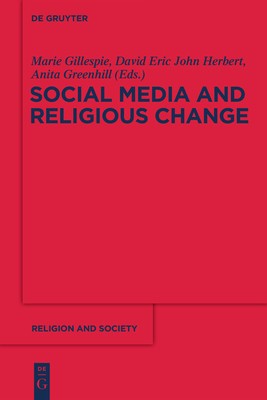
- We will send in 10–14 business days.
- Publisher: De Gruyter
- Year: 2013
- Pages: 240
- ISBN-10: 3110488574
- ISBN-13: 9783110488579
- Format: 15.5 x 23.1 x 1.5 cm, minkšti viršeliai
- Language: English
- SAVE -10% with code: EXTRA
Social Media and Religious Change (e-book) (used book) | bookbook.eu
Reviews
Description
This volume offers unique insights into the mutually constitutive nature of social media practices and religious change. Part 1 examines how social media operate in conjunction with mass media in the construction of discourses of religion and spirituality. It includes: a longitudinal study of British news media coverage of Christianity, secularism and religious diversity (Knott et al.); an analysis of responses to two documentaries 'The Monastery' and 'The Convent' (Thomas); an evaluation of theories of the sacred in studies of religion and media within the 'strong program' in cultural sociology in the US (Lynch); and a study of the consequences of mass and social media synergies for public perceptions of Islam in the Netherlands (Herbert). Part 2 examines the role of social media in the construction of contemporary martyrs and media celebrities (e.g., Michael Jackson) using mixed and mobile methods to analyse fan sites (Bennett & Campbell) and jihadi websites and YouTube (Nauta). Part 3 examines how certain bounded religious communities negotiate the challenges of social media: Judaism in Second Life (Abrams & Baker); Bah'ai regulation of web use among members (Campbell & Fulton); YouTube evangelists (Pihlaja); and public expressions of bereavement (Greenhill & Fletcher). The book provides theoretically informed empirical case studies and presents an intriguing, complex picture of the aesthetic and ethical, demographic and discursive aspects of new spaces of communication and their implications for religious institutions, beliefs and practices.
EXTRA 10 % discount with code: EXTRA
The promotion ends in 23d.22:09:13
The discount code is valid when purchasing from 10 €. Discounts do not stack.
- Publisher: De Gruyter
- Year: 2013
- Pages: 240
- ISBN-10: 3110488574
- ISBN-13: 9783110488579
- Format: 15.5 x 23.1 x 1.5 cm, minkšti viršeliai
- Language: English English
This volume offers unique insights into the mutually constitutive nature of social media practices and religious change. Part 1 examines how social media operate in conjunction with mass media in the construction of discourses of religion and spirituality. It includes: a longitudinal study of British news media coverage of Christianity, secularism and religious diversity (Knott et al.); an analysis of responses to two documentaries 'The Monastery' and 'The Convent' (Thomas); an evaluation of theories of the sacred in studies of religion and media within the 'strong program' in cultural sociology in the US (Lynch); and a study of the consequences of mass and social media synergies for public perceptions of Islam in the Netherlands (Herbert). Part 2 examines the role of social media in the construction of contemporary martyrs and media celebrities (e.g., Michael Jackson) using mixed and mobile methods to analyse fan sites (Bennett & Campbell) and jihadi websites and YouTube (Nauta). Part 3 examines how certain bounded religious communities negotiate the challenges of social media: Judaism in Second Life (Abrams & Baker); Bah'ai regulation of web use among members (Campbell & Fulton); YouTube evangelists (Pihlaja); and public expressions of bereavement (Greenhill & Fletcher). The book provides theoretically informed empirical case studies and presents an intriguing, complex picture of the aesthetic and ethical, demographic and discursive aspects of new spaces of communication and their implications for religious institutions, beliefs and practices.


Reviews